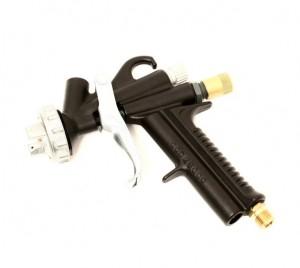Correcting imperfections in glass paint
Several options for correcting imperfections
The start often determines the finish, so starting out well is the best way to minimize the need for correcting imperfections in glass paint applications. As always, start out any glass paint project with proper surface preparation. By eliminating dirt, dust and grease on the glass surface before painting, you can help minimize these sources of paint imperfections.
You can also reduce the need for correcting imperfections in glass paint applications by applying paint carefully in thin coats, and allowing the paint to dry fully between coats. If you need to remove paint, it’s easier to remove a thin application of paint than a thick one, so thin coats of glass paint will set you up for a great finish. Thick coats of paint not only take longer to dry, but that longer drying time leaves more time for your project to pick up dust, dirt and other unwanted inclusions. Once your paint has been applied to the glass, allow it to dry in a clean, protected space. If you’ve applied a thin coat of paint, you should be able to handle the project safely in about four hours.
Once the paint has dried, check the application carefully for imperfections. You can correct a thin spot in the base coat by following with an even application of subsequent coats of paint. If your base coat becomes smeared while drying, you can remove the smeared area with gentle abrasion using fine steel wool or a single-edged razor blade. Reprepare the surface and reapply a thin coat of paint. Do not apply additional coats of paint until the first coat has dried completely. Once the paint has dried, the repair will blend seamlessly with the rest of the project.
If dust or dirt dries in the paint, don’t apply additional coats of paint. Instead, remove the debris, reprepare the surface and reapply the paint. Allow the repair to dry fully before applying additional coats of paint.
Glassprimer™ glass paint is engineered to bond permanently with glass, so correcting imperfections must happen quickly. The good news is that repaired layers will blend invisibly once the reapplied paint has dried.
If you’d like more information about working with Glassprimer™ glass paint, please check out the rest of our site. If you’d like to purchase Glassprimer™ glass paint, please visit our online store .
Photo Credit: BSK, via FreeImages.com


